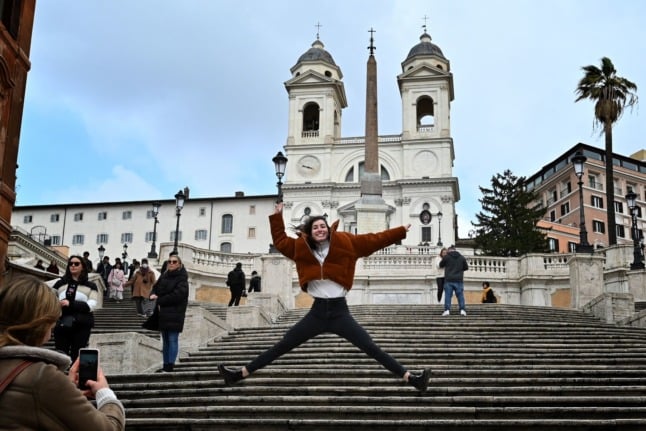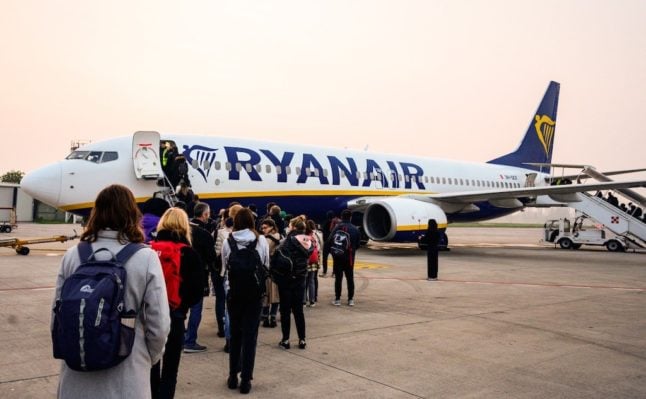It may be the off season, but the influx of foreign tourists to Italy remains high this autumn, providing a much-needed boost to the country’s tourism sector.
But with each European country setting its own guidelines and the rules shifting every few weeks, many would-be visitors have found themselves mired in confusion over exactly what’s required to enter Italy.
Here’s everything you need to know about entering Italy from abroad. These latest rules should remain in place until at least December 15th.
You probably need a test
Some visitors wrongly assume that if they are fully vaccinated, they do not a test to go on holiday to Italy.
This is currently not the case for anyone entering the country from anywhere not included on Italy’s List C (i.e., almost all non-EU countries), or anyone coming from an EU country who has been in a non-List C country in the fourteen days before entering Italy.
Anyone in this situation must be able to produce a negative Covid test result less than 72 hours old on arrival in Italy in order to avoid having to quarantine. That window of validity is reduced to just 48 hours for anyone arriving from the UK.
READ ALSO: Q&A: Answers to your questions about Italy’s updated travel rules
Those who fail to show a negative test result are technically required to self-isolate for five days on entering the country – even if you can demonstrate that you are fully vaccinated with European Medicines Agency (EMA)-approved vaccines.
While some tourists have said they weren’t asked to show a test result either on departure or on arrival in Italy, be warned that betting on this could lose you five days of holiday.

Rapid antigen tests count
Italy accepts both rapid antigen tests and PCR tests for entry into the country – so there’s no need to fork out for a more expensive and time-pressurised PCR test.
You need to have completed your vaccine cycle for at least 14 days
Before this, you’re not considered fully vaccinated for the purposes of entering Italy, and will be required to quarantine for five days on arrival – even if you have a negative Covid test result.
A full vaccination cycle is one dose of the Johnson & Johnson vaccine or two doses of any other vaccine.
Mixed doses are probably fine
The Italian government has yet to issue any formal guidance on whether it accepts mixed doses of Covid vaccines for entry into the country.
However, many Italian residents were given mixed doses of the vaccine, and anecdotally, those who received mixed vaccines have not reported any issues entering the country.
As of September, Italy officially approves the Indian-manufactured Covishield vaccine for travel, as well as R-CoVI (R-Pharm) Covid-19 vaccine recombinant (Fiocruz).
READ ALSO: Update: Italy recognises Indian-produced Covishield vaccine for travel
That’s on top of the basic EMA-approved vaccines: AstraZeneca (Vaxzevria), Pfizer/BioNTech (Comirnaty), Moderna (Spikevax), and Johnson & Johnson (Janssen).
You need a ‘green pass’ or its equivalent once in Italy to access most facilities (unless you’re under 12)
Once in Italy, you’ll need a Covid-19 health certificate or ‘green pass’ to gain access to most tourist sites and indoor seating at restaurants, and to use long distance public transport (children under the age of 12 are exempt from this requirement).
For those vaccinated in Italy or anywhere else in the EU, the green pass takes the form of a QR code that can be easily scanned.

READ ALSO: EXPLAINED: Where do you now need to show a Covid green pass in Italy?
While The Local has been contacted by at least one dual citizen living in the US who says they managed to obtain an authentication code to download a green pass, as a general rule this option is only available to Italian residents.
For foreign tourists, vaccination cards or certificates issued by the health authorities in any of the following five countries are officially considered equivalent to the green pass in Italy:
- Canada
- Israel
- Japan
- United Kingdom (including England, Scotland, Wales, Northern Ireland, Gibraltar, the Isle of Man, the Channel Islands and British military bases on Cyprus)
- United States of America
If you have a certificate from another country in the EU or Schengen Zone, or one of the above non-EU countries, it should theoretically get you anywhere an Italian green pass would in Italy – and you don’t need to convert it into a green pass.
In reality, some readers have reported having been barred from boarding trains at the last minute because the conductor did not recognize their foreign-issued vaccination card.
If you’re from another non-EU country not listed above, or want an Italian version of the green pass for any reason, you may be able to have your foreign-issued certificate converted – however, this can only be done when you are in Italy, and rules vary around the country.
READ ALSO: EXPLAINED: How can you get Italy’s ‘green pass’ if you’re not vaccinated?
With this in mind, if it’s very important that you gain access to somewhere under time pressure (e.g. for a domestic flight or long-distance train or ferry journey), it might be worth getting a temporary Italian green pass.
If you’re in this situation, there is some good news:

MARCO BERTORELLO / AFP
You can get a 48-hour green pass relatively cheaply
Anyone in Italy can get a green pass that is valid for at least 48 hours by taking a rapid antigen test at a pharmacy.
In many pharmacies participating in a government scheme, these are capped at €15 for for adults and €8 for young people aged 12 to 18.
The pass’s validity is extended to 72 hours if you get a PCR test.
READ ALSO: 72 or 48 hours? How Italy has updated the rules on testing to obtain the Covid green pass
You will be issued with a QR code in paper and digital format that can be scanned in exactly the same way as a long-term green pass.
You don’t need a green pass everywhere
While you’d find it a challenge being a tourist in Italy without a green pass or its equivalent, you don’t need one everywhere you go.
Accommodation owners in Italy do not have to ask guests for a health certificate in order to let them stay. In fact, so long as you’re staying there you can also dine at your hotel’s restaurant or have drinks at its bar without a pass – even indoors.
However, you may be required to show a health certificate if the hotel opens its restaurant to non-residents too, Italian media have reported; and you might need to show a health pass in order to access certain hotel facilities, such as the gym, swimming pool or spa. You can also be asked for one if you’re attending a conference or wedding reception on the hotel’s premises.
You don’t need a green pass to take local, non-interregional public transport, such as trips on the metro, trams, or local buses or trains; and you don’t need a certificate to have a drink at the bar, provided you keep your mask on when you’re not sipping.
Finally, you don’t need one to go shopping or to go to the hairdresser, if that’s the kind of thing you like to do on holiday.
Ski season is open – with some provisos
As of late October, Italy’s slopes are once more open for business.
While Italy’s government did not specify that the green pass would be required on slopes or to take ski lifts this winter, this is one of the rules agreed in a protocol signed last month by Italy’s winter sports federation, association of chairlift operators and association of ski instructors.
READ ALSO: What are the Covid rules on Italian ski slopes this winter?
The green pass requirement applies to everyone aged over 12 when accessing ski lifts and slopes, according to Italian media reports.
Capacity is reduced to 80 percent for closed cable cars, while open chairlifts can operate at full capacity.
Ski slopes must use lanes which “guarantee interpersonal distancing of at least one metre” and staff should be on hand to enforce rules and check for areas at risk of overcrowding.
Surgical-grade or FFP2 masks will be mandatory “both in common areas and on the slopes”, according to Italian media.



 Please whitelist us to continue reading.
Please whitelist us to continue reading.
Member comments